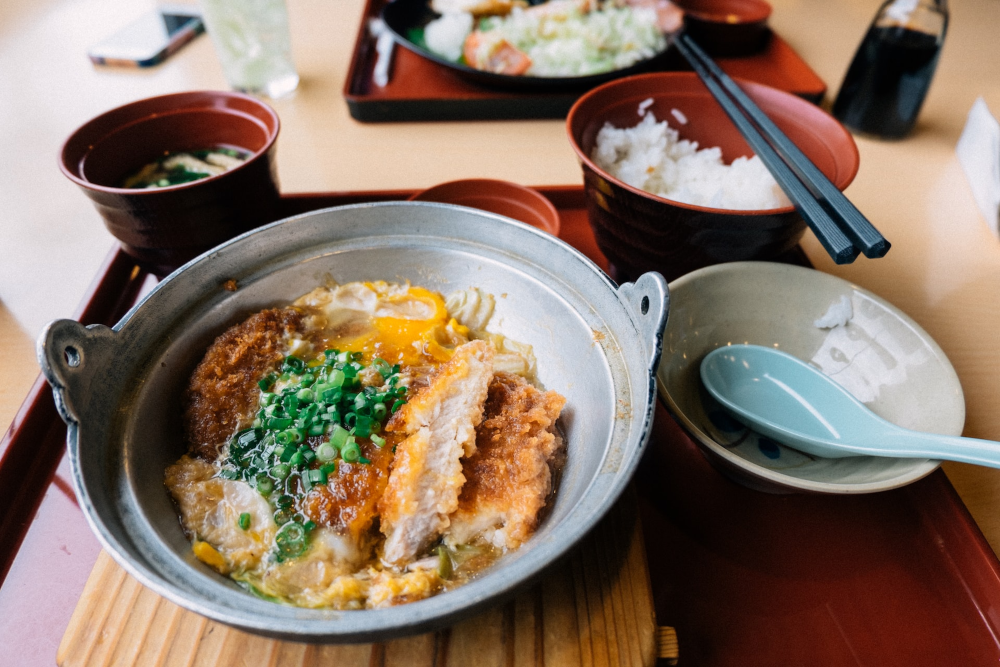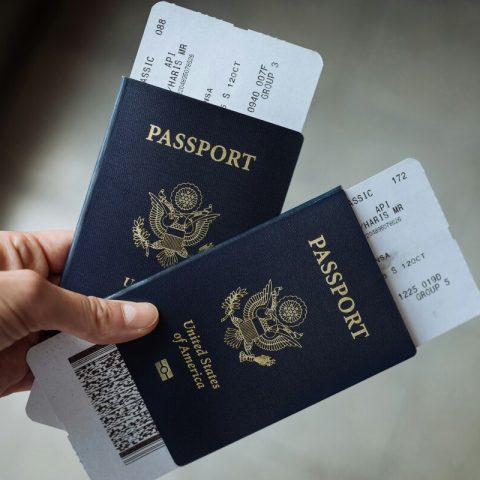
Welcome to Japan! How exciting that your studies have led you to live in this wonderful country. Japan is an amazing country to live in as a student with various benefits. In this article, I will give you an introduction to food culture and must-try foods for any international student coming to Japan.

Photo by natsuki on Unsplash
One of the first things you’ll learn about eating in Japan is that it is often done in a social setting. Oftentimes, students connect with their peers by going out to eat and drink together. This is often done at an izakaya, a restaurant that typically offers small dishes of Japanese food and a variety of drinks. The dishes are often shared which helps to create a friendly and familiar atmosphere, and many guests also drink which helps ease the tension. Each izakaya typically has their own recommended dishes, but a few honorable mentions that are sure crowd pleasers are karaage (known as ‘Japanese fried chicken’), edamame, yakitori (grilled chicken skewers) and tamagoyaki (known in Western Japan as dashimaki, often translated to ‘Japanese omelet’). If you prefer something a little cheaper, Japanese-style ‘family restaurants’ are also popular among students. Don’t let the name fool you, you do not have to go exclusively with your family. These restaurants are known for being cheap, accessible and great for bigger groups. Some popular ones include Saizeriya, Gusto and Bikkuri Donkey.

Photo by Drica Pinotti on Unsplash
Another must-try in Japan is local street food. Depending on where in the country you are, the street food you’ll encounter will change. Not only is Japanese street food delicious, it is also affordable and quick. As a newly arrived student in Osaka, my classmates and I used to go out for takoyaki (balls made of batter filled with octopus and topped with sauce) every chance we got. It was a perfect snack since it was tasty, filling and usually under 500 yen. Upon arriving in Japan, take time to research your local area’s popular street food. Some examples of popular street foods are yakisoba (Japanese stir-fried noodles), ikayaki (grilled squid), crepes (often filled with whip cream and chocolate or fruit) and dorayaki (Japanese red bean pancake).

Photo by Michael Busch on Unsplash
All the options of amazing food in Japan can sometimes feel overwhelming. One way to quickly familiarize yourself with Japanese food culture is to join a food tour. Arigato Travel offers a variety of tours in Tokyo, Osaka, Kyoto, Hiroshima and around Mt. Fuji. Additionally, we also offer online experiences for those who cannot attend our tours in person, like this crash-course on the top five most popular Japanese foods here. By joining a food tour with a local expert you’ll get thrown into the world of Japanese cuisine without having to navigate it yourself. What’s more, if you join an in-person food tour you also get to have a taste of all the yummy Japanese food you’ve been longing for. For students with a busy schedule, squeezing in a food tour is a great option to quickly become more knowledgeable on Japanese food culture.

Photo by Honke Nishio Yatsuhashi
During your stay in Japan you will probably want to explore other areas of the country besides where your studies are. Many students choose to explore other regions of Japan during school breaks. Besides eating all the delicious regional food you can get your hands on during your travels, I would also highlight the importance of bringing an omiyage back for your new Japanese friends. An omiyage is a souvenir that a person brings back to their friends, family or even co-workers after they’ve been away for a trip. This also includes domestic trips, and is often in the form of food. No matter where you go in Japan, you’ll have no problem finding omiyage shops where they sell local snacks and delicacies. Make it a habit to bring back snacks for your friends when you’ve been on a trip. Not only does it let your friends know that you were thinking of them, it also assures that you’ll receive an omiyage from them when they have been traveling. A delicious way to strengthen friendships, don’t you think?

Photo by Hokusetsu Magazine
Another life hack for students in Japan is to go to the supermarket in the evening. Japanese supermarkets usually have a section of ready-to-eat food with everything from sushi, to gyudon (Japanese beef with rice) and pre-made sandwiches. Since freshness is of great importance in Japan, by the end of the day (often around 6-7 pm), supermarkets will start to sell the food left at a discounted price, since they won’t be selling day-old products the next day. This is perfect for those who wish to stop by the store on the way home for a quick, cheap and delicious meal.
Many people make friends over food and drinks in Japan, something that foodies like myself appreciate. Whether you prefer sitting down at an izakaya with a larger group of peers or inviting a new friend out for some nearby street food, food is a sure way to get to know Japan and Japanese people. Joining a food tour, like our popular Shibuya street food tour, allows you to dive into Japanese cuisine and food culture. Just don’t forget to pick up a box of local snacks before returning so your friends don’t feel forgotten.
Featured image credits:by Tayawee Supan on Unsplash
Join us on our plan for Japan online experience before your trip to connect with a local and get some useful tips!
PIN THIS FOR LATER




